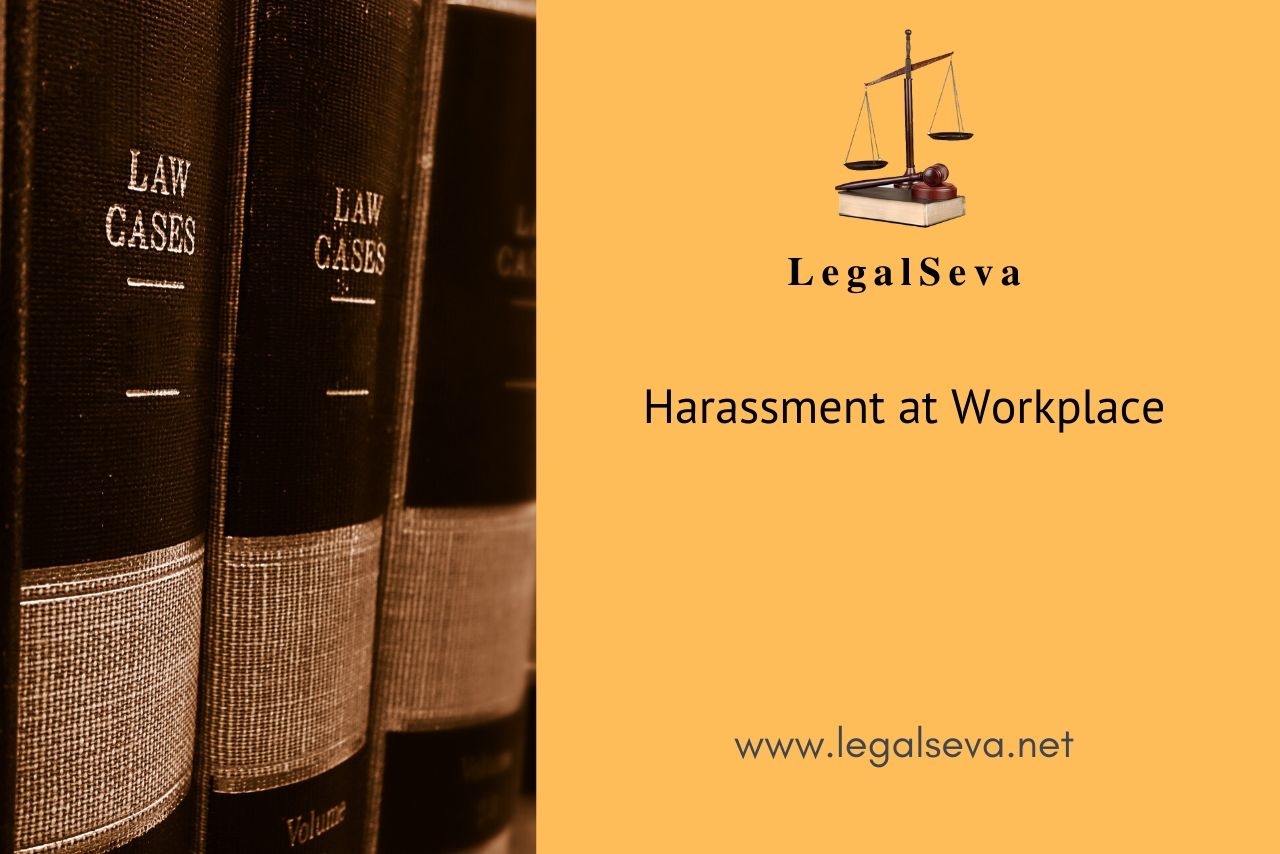Last Updated on June 15, 2024 by Satish Mishra
Indian Constitution provides right to equality to both women and men. But in practice women are discriminated against both in their homes and outside. Discrimination, on most of the times, includes elements of harassment and violence against women. More often than not physical harassment takes the form of sexual harassment or sexual violence. The term ‘sexual harassment’ means “a type of employment discrimination consisting in verbal or physical abuse of a sexual nature.”1 In recent years, sexual harassment has been one of the most serious and widespread problems found in the workplace.
Also Read- LEGAL NOTICE FROM EMPLOYER
For this reason, the Universal Declaration of Human Rights proclaimed, by the United Nations in 1948, to help everyone in their fight for self-respect and dignity (Universal Declaration). In India, the Supreme Court defined it in the case of Vishakha v. State of Rajasthan, 19972 as:
“Any unwelcome sexually determined behavior (whether directly or by implication) as physical contact and advances, a demand or request for sexual favors, sexually colored
remarks, showing pornography or any other unwelcome physical, verbal or non-verbal conduct of sexual nature.”
Also Read- LEGAL REPRESENTATION OR LEGAL NOTICE?
The Constitution of India ensures and guarantees every individual the right “to practice any profession, or to carry on any occupation, trade or business” as enshrined under Article 19(1) (g). Sexual harassment of woman at the place of work exposes her to a big risk and hazard which places her at an inequitable position vis-à-vis other employees and this adversely affects her ability to realize her constitutionally guaranteed right under Article 19(1) (g).3The landmark Vishaka judgement outlined a set of guidelines (Guidelines on Sexual Harassment at the Workplace) for the prevention and redress of complaints by women of sexual harassment in the workplace.
The guidelines place the responsibility on employers to provide a safe work environment to their women employees and include both preventive and remedial measures to make the work environment safe for women employees.
Also Read- TYPES OF LEGAL NOTICE
Before 1997, a woman experiencing harassment at workplace had to lodge a complaint under sections 354 and 509 of the Indian Penal Code but now, in 2013 Indian Parliament passed a law i.e. the Sexual Harassment of Women at Workplace (Prevention, Prohibition and Redressal) Act, 2013 on this issue more or less based on the guidelines that were issued by the Honorable Supreme Court in Vishaka v. State of Rajasthan case.
This Act contains almost all of the directives given by the SC in Vishakha case and it also consists of several other provisions such as: the Complaint Committees have been granted the powers of Civil Courts in garnering evidences; if the employers fail to comply with the provisions of the Act they will be liable for penalties up to Rs. 50,000; also, the Act includes in its purview workers of un-organized sectors such as daily wage laborers working in construction business or maids working in homes etc.
Also Read- SEND LEGAL NOTICE TO EMPLOYER, BUT WHEN?
Therefore, as per the law private and public both sectors are under statutory compulsion to protect their female Even though sufficient initiative has been taken by the government it is not enough.
The problem, therefore, needs to be examined in the context of rights for establishment of a just and equitable social order, where nobody can be treated or exploited by another as unequal.4 No law, custom, tradition, culture or religious consideration should be invoked to excuse the act of sexual harassment against any woman. Margaret Sanger said that “Woman must not accept; she must challenge. She must not be awed by that which has been built around her; she must reverence that woman in her which struggles for expression.
Also Read- SERVICE MATTERS IN LABOUR COURT CAT TRIBUNAL AND HIGH COURT
This post is written by Parth Chaturvedi of Allahabad University (2021).
If you have any subject specific questions, please dial 99888-17966 for LegalSeva.
1 Black’s Law Dictionary (9th Ed., 2009
2( 1997) 6 SCC 241
3 Surinder Mediratta, Handbook of Law, Women and Employment (1st ed, 2009)
4 A.S.Anand, Justice for Women-Concerns and Expressions (3rd Ed, ULP), 2008, 23
